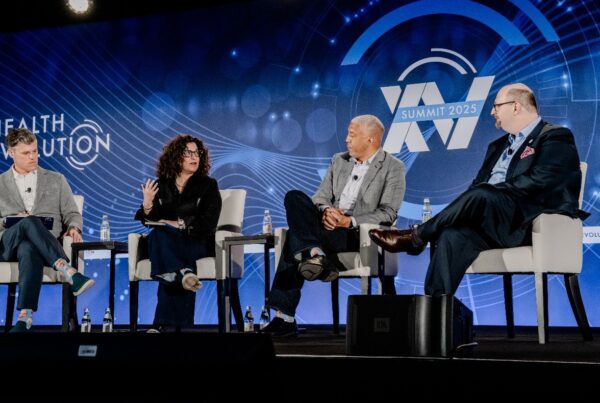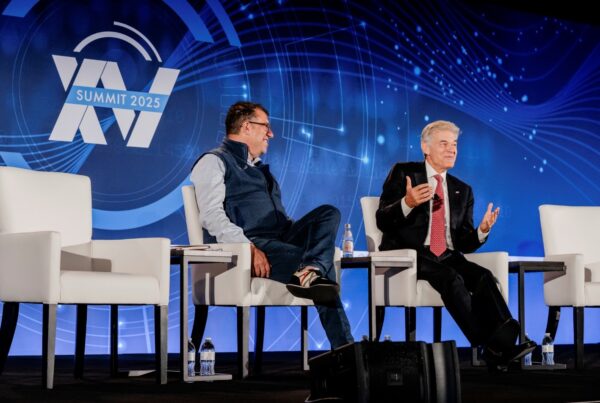When Zeeshan Syed and partners founded HEALTH[at]SCALE Technologies in 2015, the mission was to advance ‘precision care delivery’ and move away from population-level cookie-cutter approaches for managing patients and toward more sophisticated individualized care delivery focusing on one patient at a time.
Health Evolution interviewed Syed about what inspired him to start the company, health data’s unique machine learning needs, building a world-class team with expertise in machine learning and health care to solve some of health care’s most difficult problems and more.
What is the HEALTH[at]SCALE origin story? Or what inspired you to start the company?
Syed: Health care is personal to me. About six or seven months after I had finished my Bachelors and Masters in Computer Science at MIT, I received a call in the middle of the night from my uncle informing me that my father had just suffered a major heart attack. As a diabetic, my father had a silent heart attack without any of the stereotypical heart attack symptoms. He did not recognize that he was having a heart attack at the time. It was another day or so before he went in to see a doctor and by that time unfortunately a lot of damage had been done. It was frustrating to me at the time and continues to bother me to this day that we have millions of patients who have heart attacks each year, but cannot get ahead of these health events, manage or prevent them, and at the very least, educate high-risk patients about symptoms for both stereotypical and silent heart attacks so that they can get the right, timely care. I channeled that frustration by going back to MIT’s School of Engineering and Harvard Medical School and getting a PhD through a joint program between the two institutions researching ways in which machine intelligence can help in places where our delivery system is failing. Upon graduating, I joined the University of Michigan’s Computer Science department as a faculty member in AI and Machine Learning and ran a successful lab funded by the National Science Foundation, National Institutes of Health and the American Heart Association. After getting tenure, I joined Stanford Medicine as a faculty member in the Stanford University School of Medicine and a director at Stanford Health Care. A lot of the inspiration for HEALTH[at]SCALE came from seeing first-hand the inefficiencies in our health care delivery system, spending time with a group of like-minded people, and understanding that we needed technology to solve some of the hardest problems in health care delivery. Ultimately, working with other colleagues who felt as strongly about re-inventing health care as I did, we decided to found the company to use what we’d learned about machine learning in health care to have a greater impact on patient outcomes.
There are many problems machine learning can be used to address. What are you focusing on first?
Syed: The fundamental problem we are solving is that the existing health care system is designed to treat an “average” patient, who in many cases may not even exist. Care delivery at present is imprecise and impersonal, and lacks a deep and clinically nuanced understanding of the patient’s individual needs. This lack of personalization and relevance has made existing care delivery a blunt instrument leading to worse outcomes, lower satisfaction, decreased access and higher costs. For example, the journal Nature had a commentary back in 2015 highlighting how the top ten highest grossing drugs in the U.S. at the time failed to benefit between 75% to 96% of the patients who are on them. Our own recent studies show that roughly 80% of patients who seek specialist care in the U.S. may be sub-optimally matched to providers within their local geography. Then there are results from other studies, such as the Camden Coalition in 2020, finding that hotspotting approaches targeting outreach to high past utilizers do not improve readmission rates. Existing care delivery, whether you look at the choice of treatments, providers, or outreach, is imprecise; and therefore ineffective.
HEALTH[at]SCALE’s mission is to disrupt this status quo and re-invent care delivery as a precise and personalized process that is deeply aware of each patient’s unique health characteristics and needs. There has been a lot of work done previously on precision medicine, where the goal has been to develop new treatments customized for individual patients. We are now taking that further, by getting away from the development of new treatments and toward the question that we believe is even more important — how do we take the treatments and resources we have available now, and deliver them in the most effective way customized for individual patients. If we can truly understand each patient in a richly contextualized way, with the ability to forecast how different care decisions might impact their outcomes, there is a substantial opportunity to move the needle on outcomes, costs, experience and access.
In addition to personalization, the other problem we are keenly focused on is optimizing long-term outcomes rather than short-term costs. There has been a growing interest recently in value-based care and cost transparency, which in itself is a good thing, but many of these efforts obsess over what happens in the first day or few days of a healthcare encounter with very little to no insight into what happens over the next months and years. In many ways, this is a classic penny wise, pound foolish approach failing to appreciate that near-term decisions, for example, picking the cheapest option for getting a surgery, imaging or other clinical service, can end up being highly sub-optimal in the long run. Our work at HEALTH[at]SCALE looks instead to understand how care decisions might impact longitudinal outcomes for individual patients, and use this information to guide care delivery that ultimately achieves meaningful and lasting improvements in outcomes, costs, experience and access.
When we started the company in 2015, it was very much focused on building a solution to enable precision care delivery and for us that means moving away from population-level guidelines and “day one” costs to manage patients with a much more clinically nuanced understanding of how care can be unique, predictive, outcomes-based, and longitudinal. That’s what we are doing today, working with plans, employers and providers that are taking on risk to apply these capabilities and substantially improve outcomes for the populations they serve.

![Innovator CEO profile: HEALTH[at]SCALE’s Zeeshan Syed](https://www.healthevolution.com/wp-content/uploads/2022/07/Zeeshan-Syed-Health-at-Scale.jpg)









